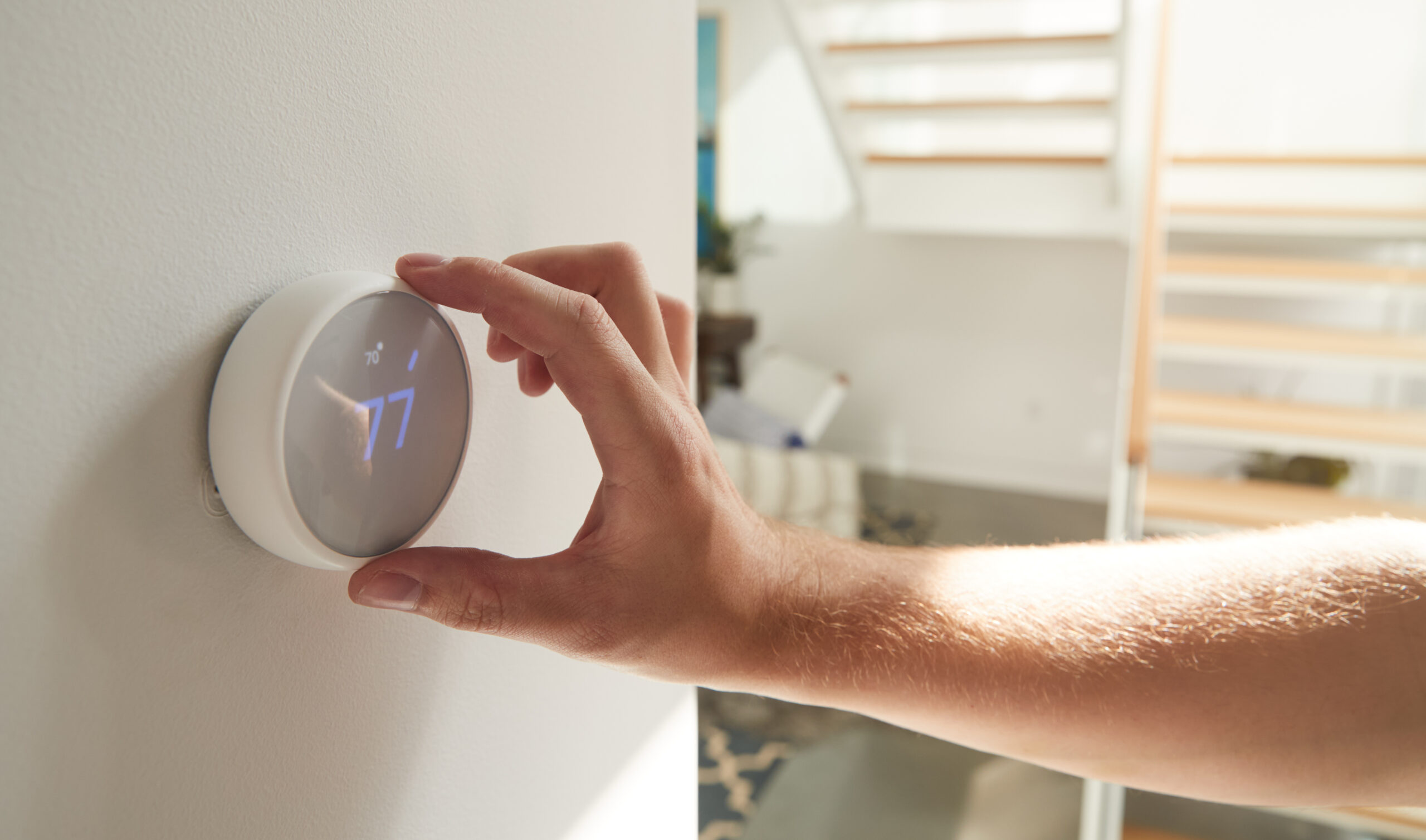
One of the smartest ways to save money on energy bills is to invest in programmable and smart thermostats. Smart thermostats provide remote control and adaptive learning. Both technologies let you schedule energy-efficient temperature changes. These devices lead to enhanced personalized comfort and significant energy-saving capabilities. Maintaining the thermostats regularly enables precise temperature readings and optimal performance. Battery replacement, cleaning, and calibration are of the utmost importance. If you ignore thermostat maintenance and care, you may end up with a device that can’t reach the set temperature. When this happens, expert help is almost always necessary.
1. Incorrect Thermostat Settings
When it comes to home comfort and efficiency, nothing is more important than having the thermostat set correctly. Homeowners sometimes make the mistake of setting their thermostats too hot in the winter or too low in the summer. This makes it difficult for the system to achieve the proper temperature. For example, leaving the fan on the “On” setting is an example of an incorrect setting that might make it difficult to reach the set temperature.
2. Dead Batteries
The average life span of a thermostat battery is six to 12 months; however, this might vary with use. The thermostat’s inability to maintain the desired temperature due to dead or low batteries will cause problems with the HVAC system like ineffective heating and cooling. In order to keep the thermostat running smoothly, it is important to check and replace the batteries on a regular basis.
3. Dirty or Malfunctioning Sensors
The system will not be able to attain the set temperature if the thermostat’s sensors are dirty or not working properly. Erroneous readings caused by dust, dirt or malfunctioning sensors might result in improper heating or cooling cycles. For accurate temperature regulation and peak efficiency from your HVAC system, have a professional clean and maintain the sensors regularly.
4. Poor Thermostat Placement
Misplaced thermostats make it difficult to get reliable temperature readings. As a result, this makes it impossible for the system to attain the set temperature. Do not put thermostats in drafty places or close to heat sources. Placement on inside walls, away from light, windows, and appliances, is ideal.
5. Malfunctioning Heat Anticipator
A premature system shutdown may occur if the thermostat’s heat anticipator isn’t working properly, which throws off the timing of the heating cycle. This can cause the thermostat to fall short of its target temperature, leading to insufficient heating. If you want your thermostat to reliably predict when to turn off the heat for maximum comfort, an expert needs to check and modify the heat anticipator regularly. This mainly applies to older thermostats. Digital thermostats don’t have heat anticipators.
6. Software Glitches
Smart and programmable thermostats rely on complex software for tasks like learning, scheduling, and remote control. These operations are susceptible to disruption by software bugs, which may lead to faulty temperature settings or system failures. To avoid software-related problems, it is vital to update firmware regularly and troubleshoot as needed.
7. Power Supply Problems
If the power goes out or there are variations in the electrical current, the thermostat won’t be able to achieve the temperature you’ve programmed it to. This can lead to false temperature measurements and even a full system shutdown. For the thermostat to consistently work and keep the temperature under control, it is essential to have a steady power supply and to use surge protection. A whole-house surge protector is the best option for protecting your HVAC system against power surges. These devices protect thermostats and other HVAC appliances against sudden spikes in electricity. To further fortify your home’s HVAC system, you can install surge-protected power strips and point-of-use surge protectors for certain equipment.
8. Loose or Damaged Wires
Thermostats malfunction and provide erroneous temperature readings if their wires break or become loose. Experts will double-check the electrical connections during regular HVAC maintenance. The transmission of signals between the HVAC system and the thermostat relies on the correct wiring. It’s very important that you don’t attempt to perform any electrical work yourself. Trained and licensed HVAC workers have the expertise and skill that it takes to perform electrical work safely.
9. Faulty Relay Switches
Thermostats and HVAC systems lose connection if the thermostat’s relay switches are faulty. This can cause the system to malfunction, fail to attain the desired temperature and provide erroneous temperature control. To make sure the relays work properly, have a professional check them often, test them, and replace broken ones.
10. Dirty Air Filter
A dirty air filter limits airflow in an HVAC system. This makes it impossible for the thermostat to achieve the desired temperature. Plus, the system has to work harder due to the reduced airflow, which might cause overheating or overcooling. The easiest way to avoid this problem is by changing the air filter every one to three months, or any time that it is dirty.
11. Corroded Contacts
Thermostats have contact sensors that regulate the temperature, turn the fan on or off and perform other functions. When contacts get corroded, they interfere with these operations and make it harder for the thermostat to attain the set temperature. Humidity, condensation, and contamination are common reasons for corrosion. To keep the contacts from corroding, homeowners should keep the thermostat dry and schedule timely repairs whenever they notice rust.
12. Sensor Calibration Errors
Thermostats use a variety of other sensors. Some sensors gauge the ambient temperature. Humidity sensors measure moisture levels. Occupancy and proximity sensors detect resident activity and user interactions. Flaws in the calibration of these sensors can give rise to inaccurate temperature readings. Because of this, the thermostat may fail to heat or cool the home according to the desired setting because it misreads the ambient temperature. The best way to avoid this issue is by having a professional calibrate the thermostat sensors during every HVAC maintenance visit.
13. HVAC Compatibility Issues
Problems with HVAC compatibility can make it difficult for a thermostat to regulate the temperature. Problems like these occur when the thermostat isn’t designed to work with the specific wiring or technology of the HVAC system. Because of this, homeowners should check to see whether a thermostat is compatible with their HVAC system before buying it. It also helps to talk to experts in the field or read the manufacturer’s compatibility specifications.
14. Display Problems
Electrical problems, broken parts and software errors can all cause thermostat displays to fail, leading to flickering or blank screens. This can make it impossible to know what the set temperature is. Experts take precautions during installation, tie wires securely, and update the thermostat’s software to prevent these issues. To avoid display problems in the future, it’s important to protect the device from power surges and to schedule expert checkups.
Homeowners in Hanover, MD rely on our technicians at Beltway Air Conditioning & Heating to meet all of their thermostat needs. We also help homeowners with HVAC installations, repairs, and maintenance, as well as indoor air quality testing and duct cleaning. Contact us today to schedule a thermostat inspection.


